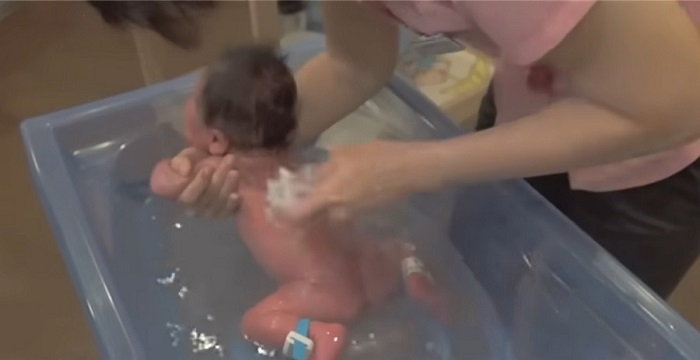
After imagining how your bundle of joy will look, you finally get to hold her after nine months. And when you do, besides the surge of emotions, there is one thing that continuously ticks your mind – she is so tiny, so small, am I holding her right?, am I feeding her well?, am I keeping her warm enough?, and many more. And then comes the time for your baby’s first bath and you are bound to feel nervous. Bathing a baby is the most heart warming experience for a parent. It can be little daunting task at first especially for the first time parents, but once the initial phase gets over, it’s all easy down the road. It is normal if you do not get it right the first time, or find it a bit tricky, but very soon you will get a hang of it. Just follow some simple tips, dos and don’ts while you bath your newborn and you are good to go.

Image Credit: https://www.youtube.com/watch?v=0GfOv7XvKYM
When to start bathing baby daily? (What age should you start bathing a baby?)
Well, it surely depends on you, when your feel like adding bath time to you little one’s routine. You may start bathing your bundle of joy shortly after she is born. However, some paediatricians believe that it is good to delay baby’s first bath till your baby turns few days old.
The baby’s skin is covered with a waxy substance called vernix that helps in protecting your munckin from germs in the environment. Usually the hospital nurses clean off the blood and amniotic fluid from your little one’s skin when it is born in the hospital. You may also ask them to leave excess vernix if you want.
When you reach home with your teeny weeny, you can give her a sponge bath.
Can You Bathe a Baby With An Umbilical Cord?
Well, it is advisable that you should only give a sponge bath to your baby till the umbilical cord comes off and is completely healed. The umbilical cord usually comes off in a couple of weeks. Going by the American Academy of Paediatrics (AAP), if you give your child a tub bath before the umbilical cord comes off, it may wet the area which may result in infection.
What is a sponge bath and how to give a sponge bath?
First few weeks you should give your baby a sponge bath as this is the safest and simplest way to bathe your tiny tot till the umbilical cord comes off and is completely healed. It is also the best and the safest way to bath boys who went through circumcision and till the circumcision site heals.
Things required before giving a sponge bath
- Bowl of warm water, not too hot, not too cold.
- Towel or blanket, padding for hard surface
- Baby towel
- Baby soap or wash
- Wash cloth
- Diaper & Diaper cream if you are using one.
- Baby clothes
How to give a sponge bath?
- Make sure you choose a room that is warm, somewhere around 23.8 degree C (75 degree F)
- Wrap your little one in a towel after removing its clothes.
- You should lay your tiny tot on a flat surface be it a changing table, floor or bed.
- Begin with your baby’s head and face. Dip the wash cloth in warm water. Avoid using baby soap or baby wash here. Just wipe the head, ears, eyes, neck folds, mouth and chin of your baby.
- Gradually expose only that area of the body that you are washing. Add some drops of baby wash in the water, dip the cloth, wring it and then clean the rest of the body, especially around the diaper area. If the baby has been circumcised, try not to clean the penis till the time the wound heals or till the time your doctor advises you to do so.
- Dry off the baby; make sure that you dry the skin folds. Put on the baby diaper. Make sure that you wrap your little one’s head with a towel or blanket to keep them warm even while you dry them.
Note: If your newborn was circumcised, it is advised that you follow the instructions of your doctor that will help you to keep the area dry and clean till the time it is completely healed. Usually the wound heals in a week’s time.
Giving your baby a bath in the bath tub
Once the umbilical cord of your baby comes off, you can give your baby a bath in the bath tub. However, make sure you keep in mind the following steps to bathe your baby in a bath tub safely.
- Fill the bath tub with 2 to 3 inches of warm water. This much water is sufficient to bathe your baby.
- Place the baby inside the water immediately after undressing it so that the baby doesn’t feel cold.
- Gently place the baby’s feet first inside the water while you hold your baby’s head with one hand to support it.
- In order to keep your baby warm inside the tub, you can pour warm water or splash some time to time.
- You should shampoo the scalp of your baby only once or twice a week, and to clean their face and head, use a washcloth.
- Wet washcloth or warm water can be used to clean the rest of their body.
- Once done, lift your baby gently and pat dry using a soft towel. The creases in their skin should also be dried gently and carefully.
Note: No matter what, never ever leave your tiny tot unattended inside the tub, even for minute. Though the water is shallow, yet it is sufficient to drown a baby.
Can I bath my baby in normal water?
It is advisable to bathe your baby in warm water. The water should not be hot or too cold for the baby. The ideal temperature is between 37°C and 38°C or 98.6°F. In order to monitor the temperature you may use your elbow or wrist to confirm that the water is not hot. You may also use a bath thermometer for the same. It is advised to check the different sides of the bath tub to ensure that there are no hot spots.
How frequently should I bathe my baby?
Newborns do not need a bath daily. If you wash and dry the diaper area every time you change and your little one is less than a year, bathing your baby thrice a week is sufficient. Bathing your newborn frequently especially when you use baby wash or soap could dry out your little one’s skin.
Babies usually don’t need frequent baths as adults because they don’t get sweaty and dirty like adults.
Should you put lotion on newborn?
After bathing your little one, you can apply fragrance and dye free baby moisturizer to avoid drying out baby’s skin.
What is the best way to bathe a baby?
- You can give your baby sponge baths until the umbilical cord falls off and it is healed. Thereafter, you can use a bath tub to bathe your baby. Take a washcloth and moisten it in lukewarm water. Wash its hands, face, genital area and legs.
- Check that you have kept every necessary thing you need to bath the baby. Get a tray and keep in it a mild bathing soap, few cotton balls and a clean diaper. This tray will be helpful for you to carry along with a towel and washcloth to the room where you going to bathe your baby. Once everything is in place only then get your baby to the bathing place.
- While choosing bathtub for baby’s bath, you can use a plastic baby tub. It is advisable to use something to line the tub that will prevent your baby from slipping. If you are using a foam liner for the tub, dry it out after each use as this would help prevent the growth of germs. You can also use bath towel to line the tub, which should be washed and dried after each use.
- Never ever leave your baby alone in water, as it can be very dangerous. So, be it your phone or the door bell, there is nothing which is as much important as your baby. And even if it is, please take your baby along with you. Best would be to inform your friends and relatives not to call at the baby bath time. As for the door bell, hang in a "Don’t Disturb" tag on the door before taking your baby for a bath. Alternatively, make sure there is someone else other than you and your baby at the home for attending the door bell or the phone.
What is the right way of bathing a baby? (Tips for bathing a baby)
Face & Neck
Start with face and neck and use a damp washcloth or cotton balls to gently clean baby's eyes, face and neck folds. The creases in the neck should be carefully dried. Remember never to try to clean the inside of your baby's ears as you may accidentally scratch or damage the eardrum.
Baby's Hair
You can use a little shampoo to wash your baby's hair. Washing the baby’s hair twice a week is good enough. Put washcloth on baby's forehead to keep shampoo out of the eyes. Use towel to gently dry baby’s hair.
Upper Body
Baby's upper body including arms and fingers should be carefully cleaned. The umbilical cord should be cleaned with some cotton swabs dipped usually dipped in hydrogen peroxide or the way you have been advised by your doctor. Thereafter, gently dry the area with a towel. Turning the baby on her tummy will greatly facilitate in washing baby's back and bum.
Genital Area
In case of baby girls wash the genital area from front to back. While washing genital area of baby boys, don't try to pull back the foreskin. The foreskin generally takes few years to separate from the underlying penis and to retract. Gently dry the genital area with the towel.
Conclusion
Handling a baby itself looks tricky and when the baby is wet, it becomes nerve wrecking. We feel you. However, the first time when you will bathe your bundle of joy, you will surely feel elated but your heart is bound to race. Relax! Take a deep breath; you will soon become a pro at it. It indeed is a moment to treasure. Just be careful while you handle your tiny tot and make sure you gather all the essentials before you bathe your baby, so that you don’t run around arranging the stuff leaving the baby unattended at any time while, be it bathing or undressing. Some babies might get fussy first time around, but it is important for you to establish a routine, and with time your baby will get accustomed to it. We can already see you full of joys of spring as you suds it up! Happy Bathing!
Article Source:
Sources - https://www.healthline.com/health/parenting/how-to-bathe-newborn#takeaway
https://www.healthychildren.org/English/ages-stages/baby/bathing-skin-care/Pages/Bathing-Your-Newborn.aspx
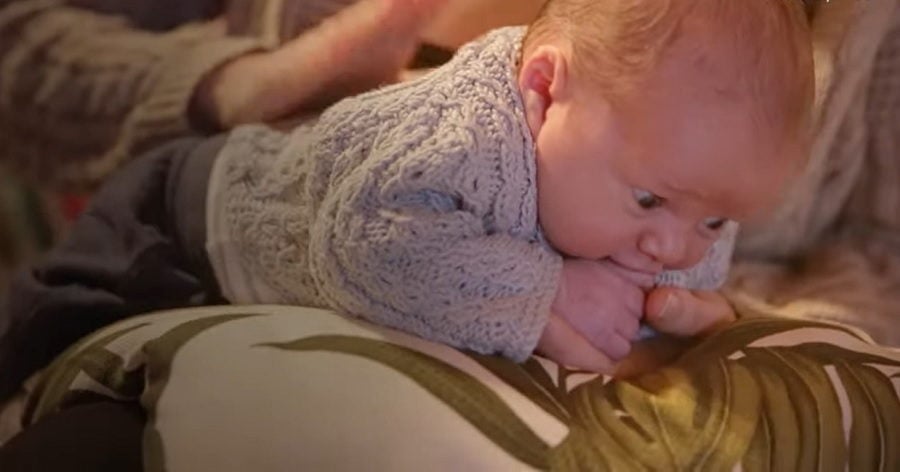 Step-By-Step Guide To Burp Your Baby: How and When?
Step-By-Step Guide To Burp Your Baby: How and When?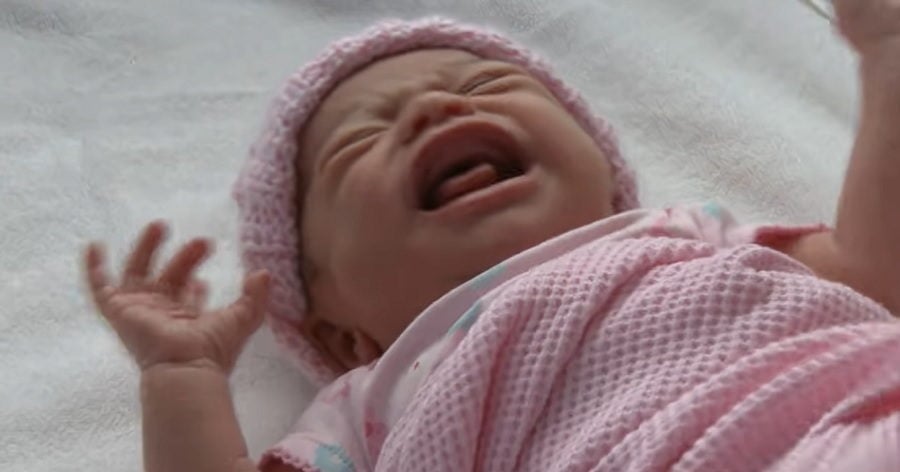 Excessively Crying Baby: Reasons & Remedies to Comfort Your Infant
Excessively Crying Baby: Reasons & Remedies to Comfort Your Infant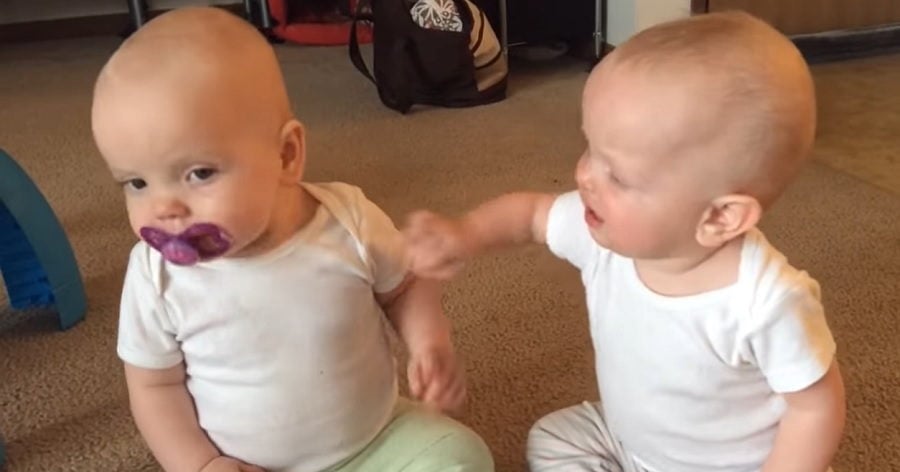 Baby Pacifiers Guide: Advantages, Disadvantages And How To Wean The Baby From A Pacifier
Baby Pacifiers Guide: Advantages, Disadvantages And How To Wean The Baby From A Pacifier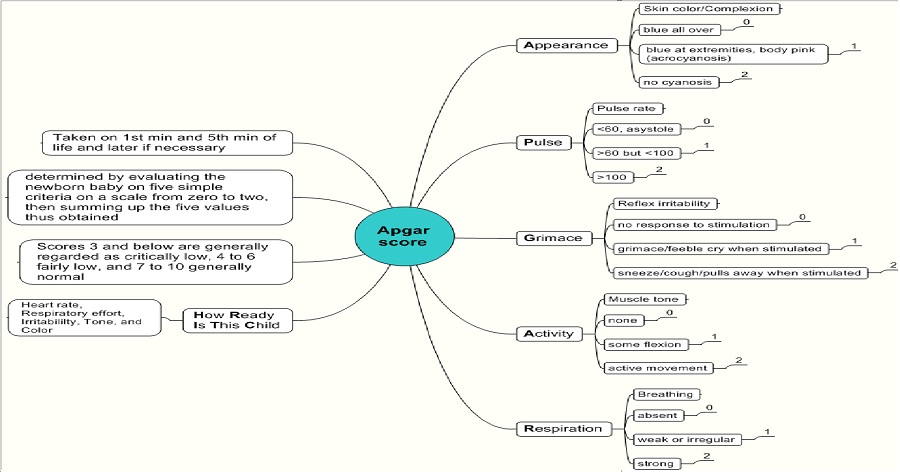 APGAR Score
APGAR Score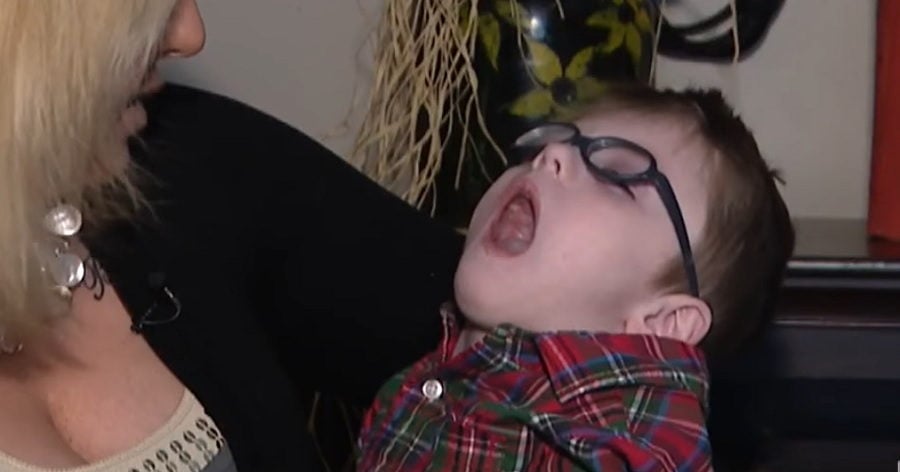 Shaken Baby Syndrome
Shaken Baby Syndrome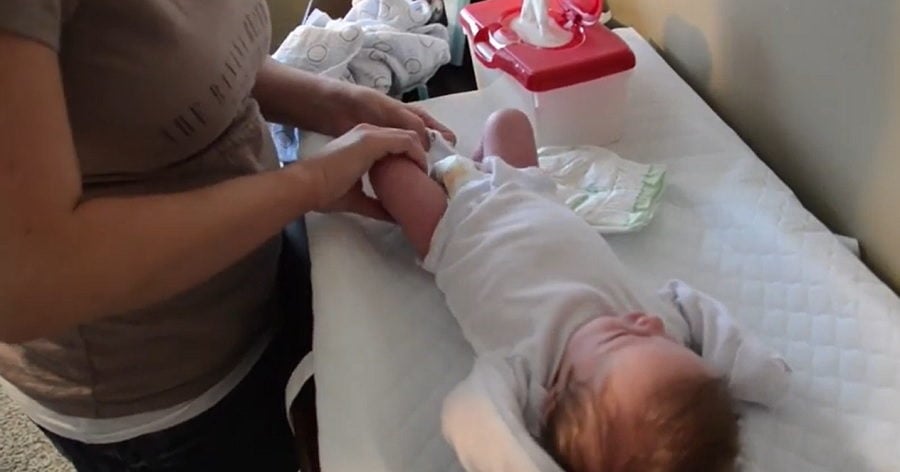 Types of Diaper Rash: Tips & Home Remedies To Treat Nappy Rash Naturally
Types of Diaper Rash: Tips & Home Remedies To Treat Nappy Rash Naturally A Step-By-Step Guide on Infant Sleep Training: Baby Sleep Methods, Sleep Schedule & Sleep Position
A Step-By-Step Guide on Infant Sleep Training: Baby Sleep Methods, Sleep Schedule & Sleep Position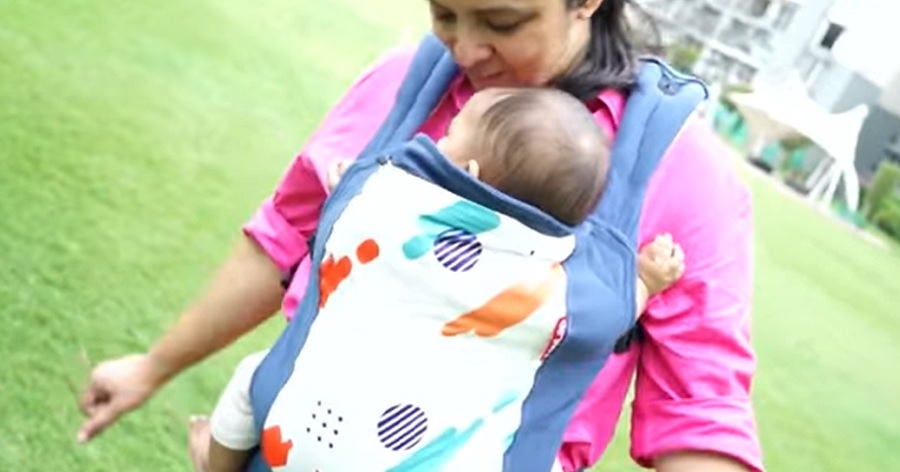 Baby Safety Products
Baby Safety Products